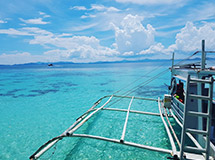
-
МјРЇСІИёСЖШИМі
-
 Malacañang Palace-Official Residence of the Pres
Malacañang Palace-Official Residence of the Pres 139,216
139,216 -
 Amana Water Park
Amana Water Park 115,872
115,872 -
 IFUGAO TRIBE
IFUGAO TRIBE 109,881
109,881 -
 Santacruzan-The Queen of all Filipino Festivals109,705
Santacruzan-The Queen of all Filipino Festivals109,705 -
 Water Refilling Station: an alternative source of drink107,984
Water Refilling Station: an alternative source of drink107,984 -
 LAMBANOG-THE POOR MAN\'S DRINK105,109
LAMBANOG-THE POOR MAN\'S DRINK105,109 -
 Christmas Parol [lantern in English]104,784
Christmas Parol [lantern in English]104,784 -
 HANGING RICE97,510
HANGING RICE97,510 -
 Taoist Temple94,361
Taoist Temple94,361 -
 Corn Fields in the Philippines90,876
Corn Fields in the Philippines90,876
Pateros - The Philippines
'
Duck Egg Capital
Pateros - The Philippines' Duck Egg Capital
BRIEF HISTORY
South of Manila is Pateros, the smallest of the seventeen cities and municipalities
comprising the Metropolitan Manila. Pateros before 1700 was only a barrio of
Pasig called ЁАAguhoЁБ or ЁАEmbarcaderoЁБ. Aguho was derived from the name of
numerous shady trees planted along the Pateros River, while ЁАEmbarcaderoЁБ
means a small port. As a port, Pateros was the focal point of trade and
commerce not only for the entire Municipality of Pasig but also for
the neighboring towns. It also served as harbor for the Malay,
Chinese, Swedish and Indian vessels that periodically called to disembark
merchandise and to engage in commerce. These were the reasons why Pateros,
as the most progressive barrio of Pasig was given the name Aguho or Embarcadero.
The name of the town itself symbolizes trade and industry
because Pateros got its name from the word ЁАPATOЁБ,
the duck that lays the eggs for balut making. ЁАPaterosЁБ
meaning duck-raisers and from early shoemakers
ЁАSAPATEROЁБ. Balut-making and shoe-making were
introduced to the town by Chinese settlers.
The sound and stable income of Pateros led to
issuance by the Spanish Governor General of a
decree in 1700 creating it as a Municipality. In 1896,
when the Philippine Revolution broke out, many Pateros
inhabitants joined the Katipunan in the struggle of
freedom from Spanish rule. These patriots attacked
the Spanish soldiers fortified at the Pasig Church.
The following year, the Spaniards retaliated, and after
burning Pasig, swooped down on Pateros,
Malapad na Bato and Taguig. On August 6, 1898,
Pateros joined the revolutionary government of Emilio Aguinaldo.
Two years after on March 29, 1900, Pateros was incorporated as a
Another attraction, and another industry, in Pateros is its
Geography
Pateros is approximately 13 km. southeast of Manila and

- ЁЄ
- ЁЄ
- ЁЄSalapan Festival
- ЁЄEmpanada Festival (Batac City)
- ЁЄPADUL-ONG FESTIVAL
- ЁЄKaumahan Festival in Barili
- ЁЄKAGASANGAN FESTIVAL
- ЁЄLalin Festival in Asturias
- ЁЄTinabuay Festival
- ЁЄGayon Bicol Festival
- ЁЄPINYASAN FESTIVAL in CAMARINES
- ЁЄMAGAYON FESTIVAL
- ЁЄBANAUAN FESTIVAL (BARANGAY.GUA
- ЁЄThe Tuna Festival in Gensan
- ЁЄPINTOS FESTIVAL BOGO CITY, CEB



- ЁЄ
- ЁЄ
- ЁЄ
- ЁЄCEBU WESTOWN LAGOON
- ЁЄGREEN LAGOON, COMPOSTELA
- ЁЄCALLAO CAVE
- ЁЄMOUNT PINATUBO IN PHILIPPINES
- ЁЄBATAN ISLAND in Batanes.
- ЁЄCALAGUAS ISLAND, CAMARINES NOR
- ЁЄAGHO ISLAND
- ЁЄCARAMOAN ISLAND IN CAMARINES S
- ЁЄSAMBAWAN ISLAND
- ЁЄPLACES TO VISIT IN LANAO DEL N
- ЁЄPLACES TO VISIT IN ZAMBOANGA C
- ЁЄPlaces to visit in Rizal Provi














 ЧЪРкДхФФ ОпАЃЛѓДу ПРЧТ
ЧЪРкДхФФ ОпАЃЛѓДу ПРЧТ 12ГтПЌМг МвКёРкИИСЗ 1РЇ
12ГтПЌМг МвКёРкИИСЗ 1РЇ
 ГЛАд ИТДТ ОюЧаПј УЃБт
ГЛАд ИТДТ ОюЧаПј УЃБт
 ИЎОѓ ЧаБГ ЙцЙЎБт
ИЎОѓ ЧаБГ ЙцЙЎБт
 СжИЛПЁ ГЛАЁ ОЕ КёПыРК?
СжИЛПЁ ГЛАЁ ОЕ КёПыРК? УжАэАЁМККё РЬКЅЦЎ СёБтБт
УжАэАЁМККё РЬКЅЦЎ СёБтБт
 ЧіСіПЁМЕЕ ЧЪРкДхФФ!
ЧіСіПЁМЕЕ ЧЪРкДхФФ! ЧіСіПЁМ АЁДЩЧб
ЧіСіПЁМ АЁДЩЧб









 ЧЪРк ЦЏБо Ч§ХУ! ФСНУОюСі МКёНК
ЧЪРк ЦЏБо Ч§ХУ! ФСНУОюСі МКёНК



































